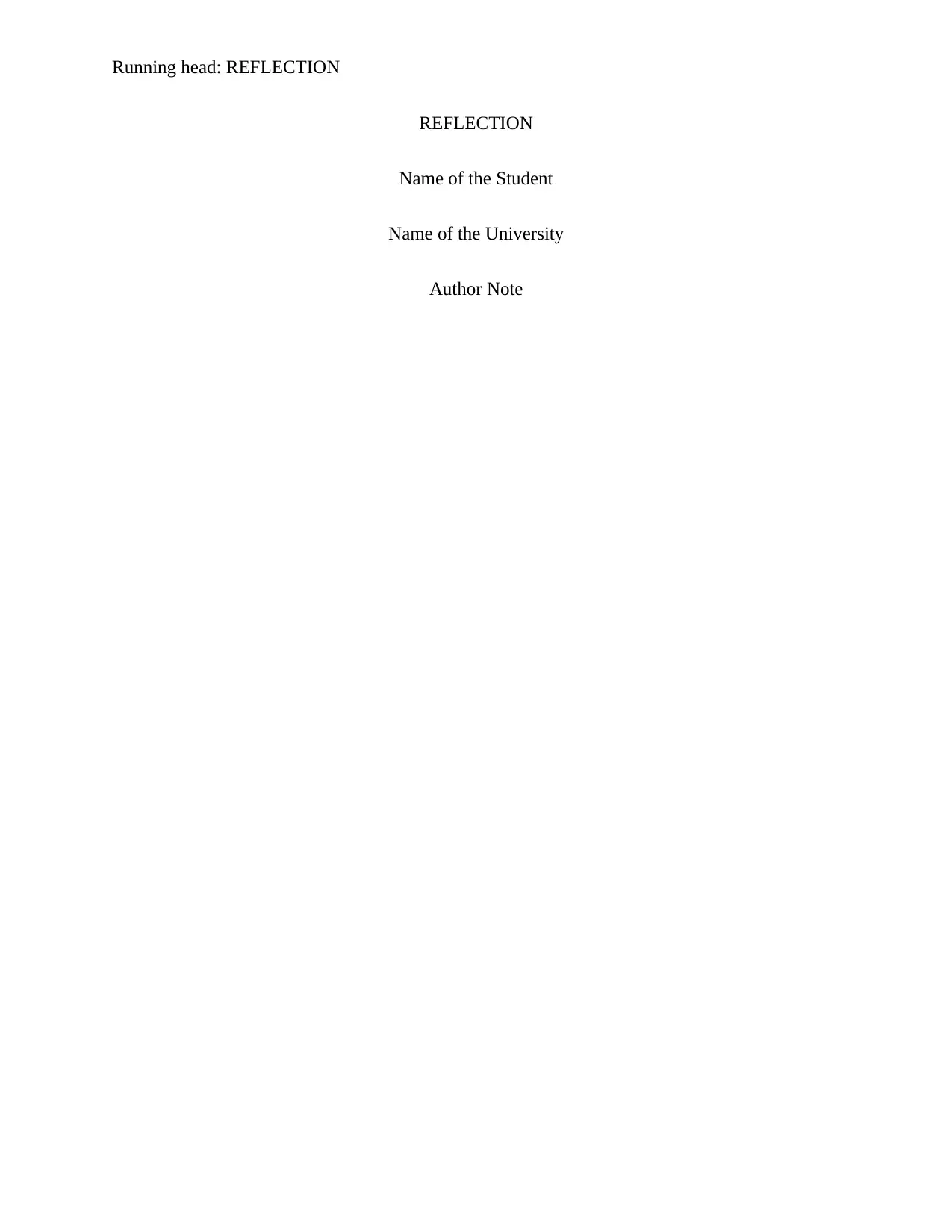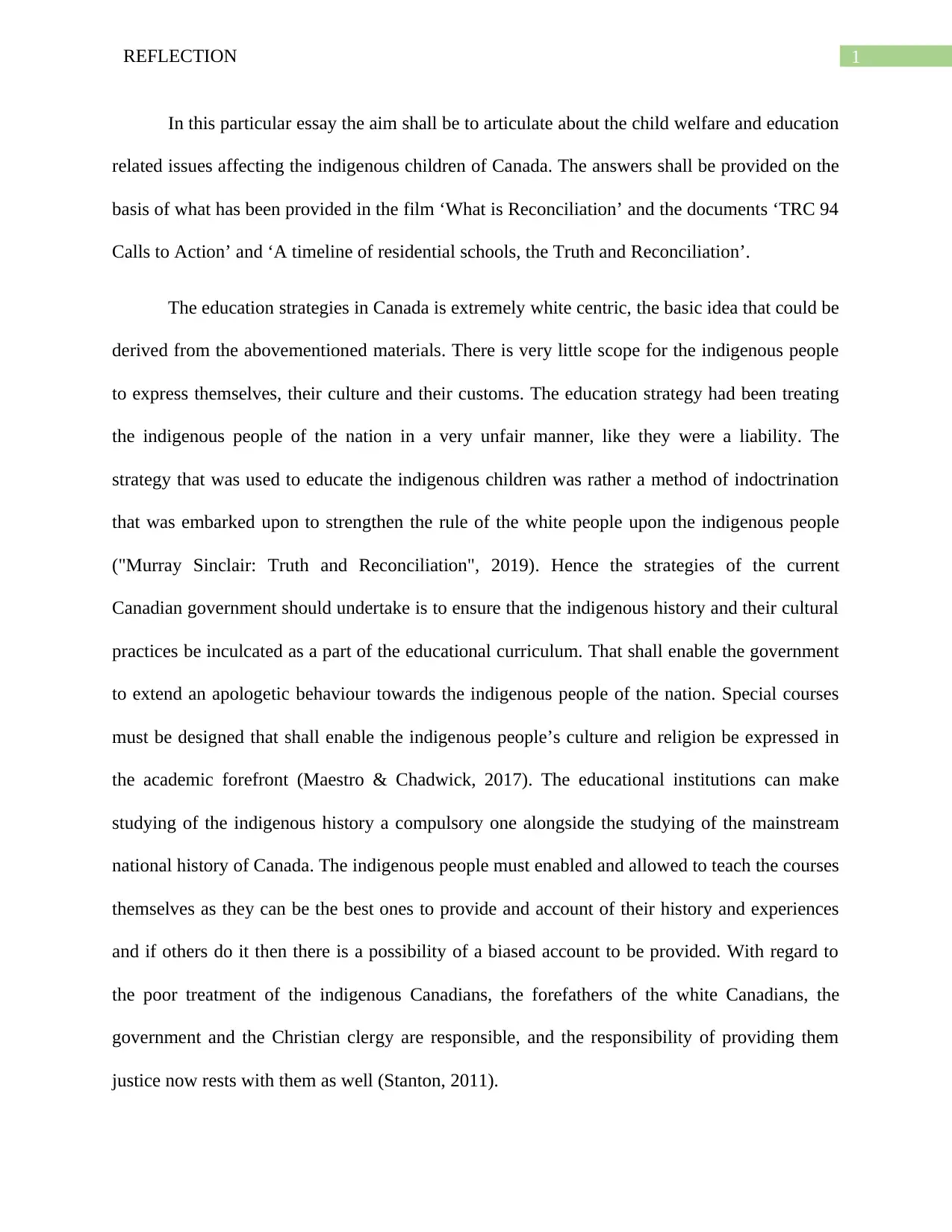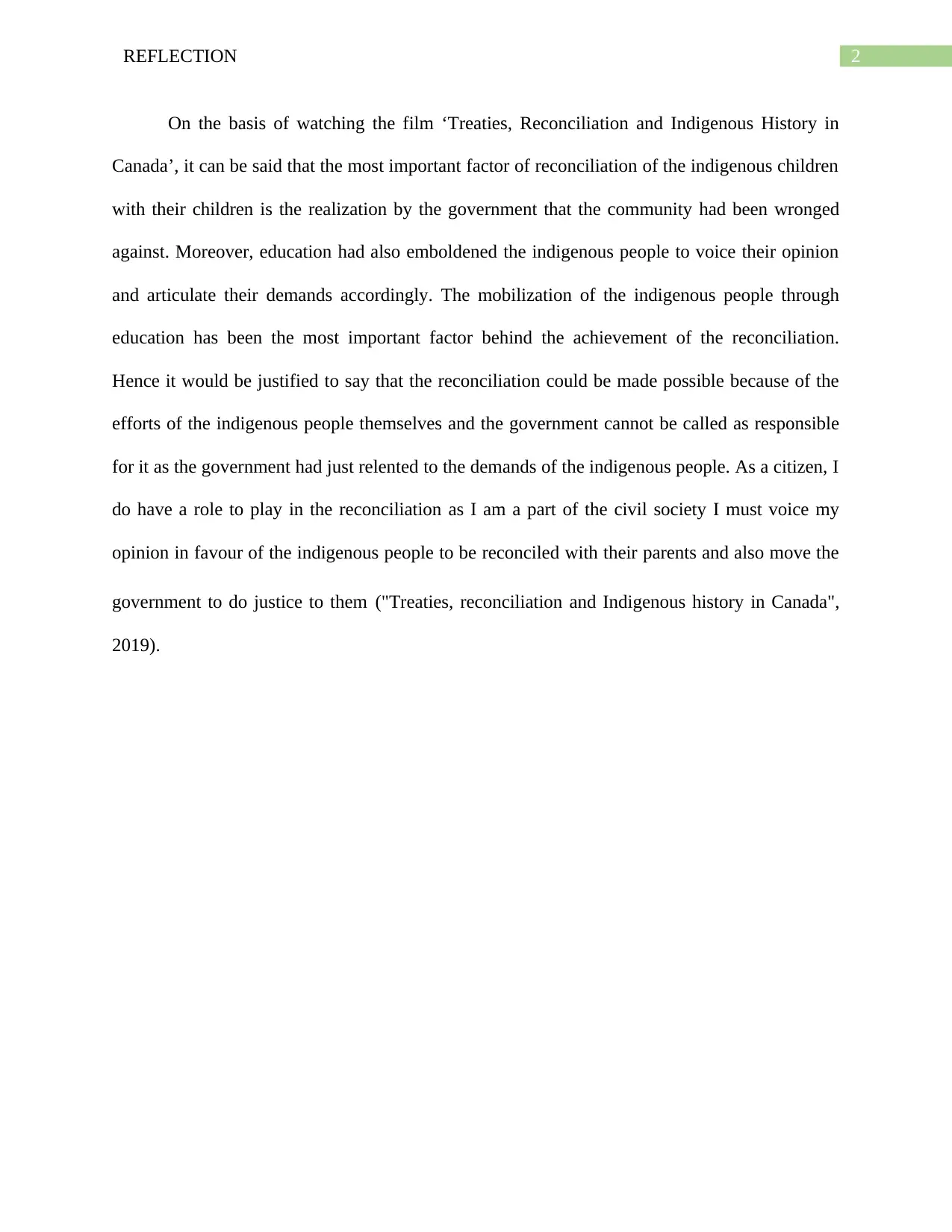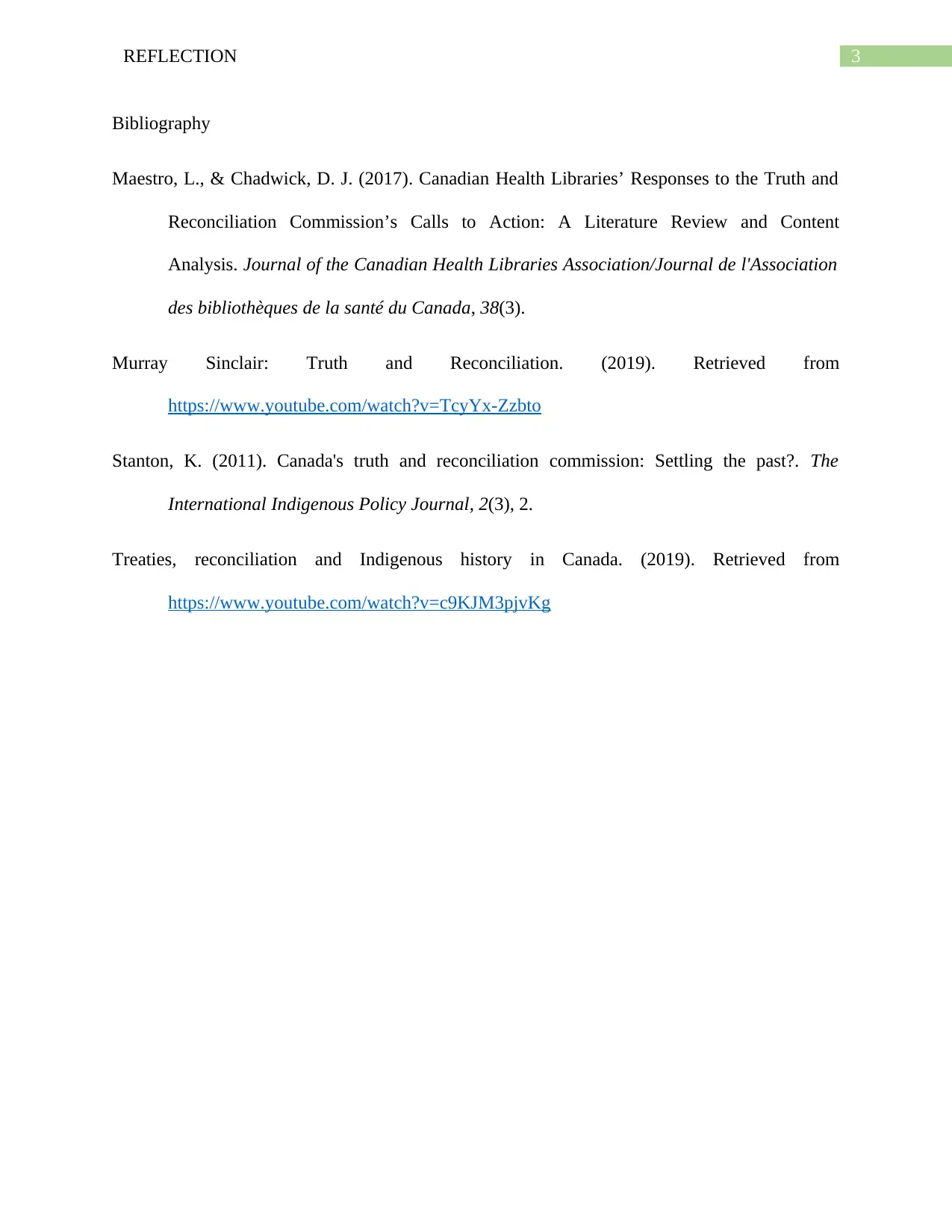University Reflection Essay: Indigenous Child Welfare and Education
VerifiedAdded on 2023/04/24
|4
|730
|228
Essay
AI Summary
This essay delves into the critical issues of child welfare and education affecting Indigenous children in Canada, drawing insights from the film 'What is Reconciliation,' the 'TRC 94 Calls to Action,' and the timeline of residential schools. The essay highlights the shortcomings of the white-centric education system and advocates for the inclusion of Indigenous history and cultural practices in the curriculum. It emphasizes the need for the government to extend an apology and implement special courses to express Indigenous culture and religion. The author argues that Indigenous people should be empowered to teach their history and experiences, and that the government and Christian clergy bear responsibility for past injustices. The essay further discusses the importance of reconciliation, highlighting the role of education in empowering Indigenous voices and the need for the government to acknowledge past wrongs. As a citizen, the author recognizes their role in advocating for the rights of Indigenous people and supporting the reconciliation process.
1 out of 4











![[object Object]](/_next/static/media/star-bottom.7253800d.svg)